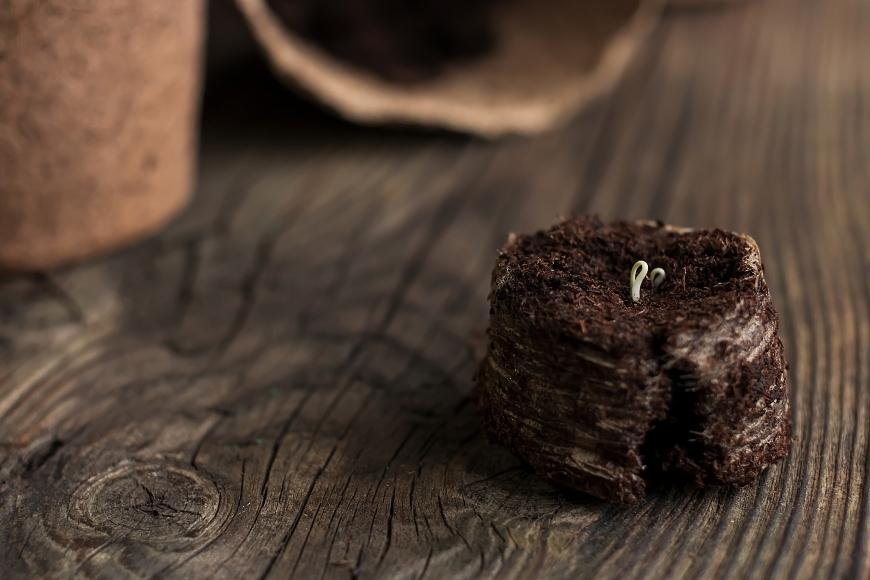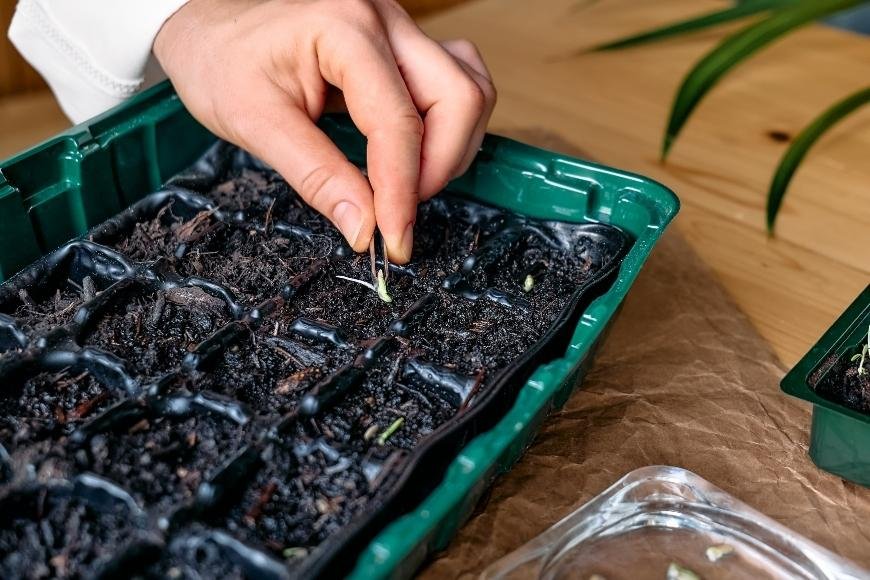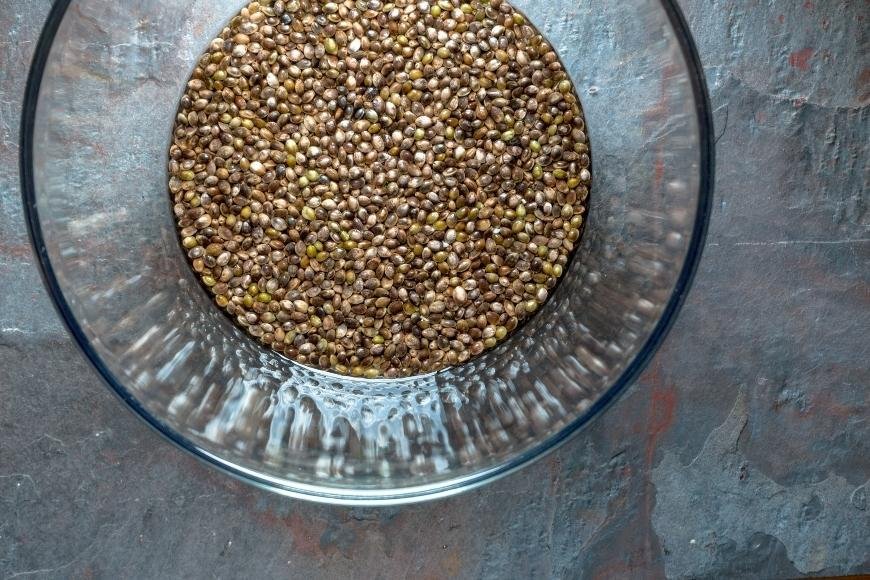Germinating Cannabis: Troubleshooting Guide
Overcome germination issues with our Germinating Cannabis: Troubleshooting Guide, offering expert tips on temperature, watering, soil and more!

Germinating cannabis seeds can be a perplexing yet gratifying experience for growers, regardless of their skill level. To aid novice and experienced growers alike in the challenging yet rewarding process of germinating cannabis seeds, this guide will provide valuable insight into temperature requirements, common issues such as overwatering and poor soil quality, storage techniques for cannabis seeds, recommended germination methods, and how to identify nutrient deficiencies in seedlings.
From understanding temperature requirements to addressing common issues such as overwatering and poor soil quality, our comprehensive guide will equip you with the knowledge needed to overcome obstacles in your journey towards growing healthy cannabis plants.
In addition, we'll discuss proper storage techniques for cannabis seeds, recommended germination methods, and how to identify nutrient deficiencies in seedlings. By following the advice presented in this Germinating Cannabis: Troubleshooting Guide, you'll be well on your way to cultivating thriving cannabis plants that produce bountiful buds come harvest time.
Table of Contents:
- Temperature Requirements for Germinating Cannabis Seeds
- Overwatering Cannabis Seedlings
- Poor Soil Quality
- Storing Cannabis Seeds
- Recommended Germination Methods
- Troubleshooting Common Issues
- Nutrient Deficiencies in Seedlings
- FAQs in Relation to Germinating Cannabis: Troubleshooting Guide
- Conclusion
Temperature Requirements for Germinating Cannabis Seeds
Temperature is a key component for achieving germination of cannabis seeds. For cannabis seed germination, temperatures should be maintained within the range of 68-86°F (20-30°C) for optimal results. Temps outside the optimal range can thwart germination or lengthen the process.
To ensure your cannabis seeds are kept at the optimal temperature, you'll need an accurate thermometer and hygrometer. These devices will measure both the air temperature and humidity level of your grow room or tent. You should also consider investing in a fan or cooling system if necessary, as these will help keep temperatures consistent throughout the day and night cycles.
Ensure that lights are not in use during times when they are unnecessary, as this will help to maintain a cooler environment and prevent heat-related issues. Additionally, try not to open windows too often as this can introduce cold drafts which could affect your seedling's growth rate significantly.
Finally, if you find yourself dealing with extreme temperatures either way - too hot or too cold - then using heating pads/mats or cooling fans may be necessary depending on what type of environment you have available for germination purposes. This is especially important if you're growing outdoors where fluctuations in weather conditions occur more frequently than indoors environments do.
Temperature needs for sprouting cannabis seeds are crucial to the success of your harvest, so be sure to stick to directions. Overwatering can cause problems with seedlings and should also be avoided; however, it is possible to remedy if caught early enough.
Overwatering Cannabis Seedlings
Overwatering cannabis seedlings is one of the most common issues growers face when germinating their seeds. If too much H2O is used, the roots can't take in air and the herb will experience a deficiency of nutrients, causing it to become stunted or even perish. It’s important for new growers to understand how much water is necessary and how often it should be applied in order to ensure healthy growth.
One of the main signs that your seedling has been overwatered is wilting leaves. When this happens, it’s important to stop watering immediately as any additional moisture can cause root rot or other diseases. The soil should also be checked for drainage - if there isn't enough space between particles for air and water, then drainage may be an issue which needs addressing before further watering takes place.
When you do start watering again, use only small amounts at a time until you can determine what works best for your particular setup. For outdoor spots in sunny climes with good airflow, around 1/4 cup per square foot every couple of days should do the trick; but for indoor plants with less ventilation, you may need to give them larger amounts (1/2 cup per square foot) spaced out more. As always check the topsoil before applying more moisture - if it feels dry then go ahead and give your plant some love.
It's also essential that growers pay attention to humidity levels in their grow room or greenhouse - too much humidity can lead to mold growth on leaves and stems which could eventually kill off your crop altogether. A dehumidifier might help keep things under control but make sure not to set it too low otherwise you risk drying out the soil completely which would have similar effects as overwatering does: root damage due poor aeration & nutrient absorption resulting in stunted growth or worse yet death of entire plants.
Finally, remember that different strains have different requirements so it is important to research beforehand what type of environment each strain prefers. This will help to avoid mistakes such as over- or under-watering them during the germination stage; better safe than sorry after all.
Overwatering cannabis seedlings can result in waterlogged roots and nutrient deficiencies, so it's imperative to ensure your plants are receiving sufficient drainage. To prevent these issues from occurring in the first place, make sure you have a quality soil mix with proper aeration for your young plants. Moving on, poor soil quality is another common issue when germinating cannabis seeds which we will discuss next.
Poor Soil Quality
Poor soil quality can be a major issue when attempting to germinate cannabis seeds. Poor soil will often result in low germination rates and stunted seedling growth. It is important to identify poor soil quality before planting, as this can save time and energy from having to replant or deal with unhealthy plants.
Soil should have the right amount of nutrients for successful germination. To ensure optimal seedling health, it is essential to confirm the soil contains adequate minerals and micronutrients by testing its pH level and nutrient content with available test kits. This can be done by testing the pH level and nutrient content of the soil using specialized test kits available at garden stores or online retailers.
It is also essential that there is adequate drainage in order for water to reach roots properly without becoming stagnant or pooling up around them which could cause root rot or other issues with your seedlings’ health. To ensure good drainage, you may need to add sand or peat moss into your potting mix if needed depending on its composition.
Avoiding any potential issues associated with compacted soils, try not to overwork the soil excessively with tools such as shovels or trowels prior to planting in order to maintain optimal aeration levels throughout its entirety. This will ensure healthy root development and help steer clear of subpar results come harvest season. Incorporating keywords: compaction, oxygenated air pockets, potting mix, aeration levels.
With the right information and resources, it is possible to surmount poor soil quality as a hindrance to growing cannabis. On the other hand, storing your cannabis seeds correctly can help you avoid any potential issues before they even arise.
Storing Cannabis Seeds
Cannabis seeds are a valuable commodity, so it’s important to store them properly. Preserving the potency of your cannabis seeds necessitates taking into consideration factors such as temperature, moisture and illumination. When stored correctly, cannabis seeds can last up to five years or longer before they start losing their germination rate.
The optimal temperature for storing cannabis seeds is between 3°C and 7°C (37-45°F). This range ensures that the seed remains dormant without risking damage from too much heat or cold. Keeping the temperature consistent is key – sudden changes in temperature can cause irreparable damage to the seed's cell structure and reduce its chances of germinating successfully.
Humidity should be kept low when storing cannabis seeds; ideally around 10-15%. Too much moisture will encourage mold growth which can quickly ruin your entire stash. To keep humidity at bay, use airtight containers with desiccants such as silica gel packets or food grade diatomaceous earth. Make sure to check these periodically for signs of saturation – if they’re not working anymore you may need to replace them with fresh ones.
Light exposure should also be minimized when storing cannabis seeds since direct sunlight will degrade their potency over time. Storing your stash away from windowsills or other sources of bright light is ideal but if this isn’t possible try covering them with something like foil paper or cardboard boxes that block out UV rays completely . It’s also best practice to turn off any lights in the room where you store your cannabis seeds as even artificial lighting emits some amount of radiation which could potentially harm them over time.
By following these simple tips on how to store marijuana, cannabis, weed, pot, ganja and herb safely and securely you will ensure that your precious little nuggets remain viable long into the future.
Storing cannabis seeds correctly is essential for successful germination, so be sure to follow the recommended storage guidelines. Having outlined the importance of proper storage, let us now look into some effective strategies for germinating your cannabis seeds.

Troubleshooting Common Issues
Seed germination is an essential part of growing cannabis, and there are a number of common issues that can arise during the process. Knowing how to troubleshoot these problems will help ensure successful growth and healthy plants.
One issue that may arise is temperature fluctuations. To ensure successful germination, maintain a steady temperature for your cannabis seeds. If the temperature deviates from the ideal range, it can hamper or halt germination. Ensure the necessary heating and cooling is established prior to beginning cultivation in order to avoid any issues with seedling growth or failure of germination.
Another issue is overwatering seedlings. Too much water can drown out oxygen levels in the soil, leading to root rot and other damage to young plants. To prevent this from happening, use a moisture meter or other tool designed specifically for measuring soil moisture content when watering your cannabis plants. This will help you determine when they’ve had enough water without overdoing it.
Inadequate soil quality can lead to reduced germination success and retarded plant growth if not tackled at the outset. Make sure you’re using high-quality organic soils whenever possible and adding amendments like composts or worm castings where needed for additional nutrition value and better drainage capabilities throughout your grow space setup area(s).
Storing cannabis seeds improperly can spell disaster for your harvest, so it's best to keep them away from any sources of heat such as direct sunlight or radiators/heaters. To preserve their viability and maximize shelf life, store them in airtight containers; vacuum sealed bags are ideal but mason jars with tight lids will do the trick too. Keywords: Cannabis Seeds, Heat Sources, Airtight Containers, Vacuum Sealed Bags, Mason Jars.
Before proceeding with any recommended germination method, whether sowing indoors using paper towels and soil blocks, planting outdoors in prepared beds, or attempting hydroponic cultivation with nutrient solutions; it is imperative to comprehend all possible risks associated. To prevent being taken by surprise during the course of your growing efforts - for example pH level adjustments that may be required due to alkalinity present within certain substrates chosen depending on medium type - familiarize yourself accordingly beforehand. Keywords: Germinating Cannabis Seeds, Active Voice Professional Level IQ 150 Idioms Colloquialisms Grammar Spelling Punctuation No Exclamation Points
Finally, nutrient deficiencies are another common issue faced by many growers while trying their hand at cultivating marijuana plants either indoors or outdoors. Most notably, Nitrogen deficiency causes yellowing leaves among other signs indicating something isn't quite right with one's garden setup overall. Supplementing accordingly once identified correctly is key here; doing so will help ensure a successful harvest and healthy plants in the long run.
Troubleshooting common hiccups may assist in recognizing and managing possible issues with your cannabis seedlings to ensure the greatest possibility of success. Now let's move on to discuss nutrient deficiencies in seedlings and how these can be identified and corrected.
Nutrient Deficiencies in Seedlings
Growing cannabis from seed can be a rewarding experience, but it’s important to recognize and address any nutrient deficiencies in your seedlings. When plants don’t have access to the nutrients they need, their growth will suffer. Here are some common signs of nutrient deficiency and tips for correcting them:
Nitrogen Deficiency:
If you notice yellowing leaves or stunted growth, this could indicate a nitrogen deficiency. To correct this issue, increase the amount of nitrogen-rich fertilizer you use during feeding times. You may also want to add compost tea or other organic matter into your soil mix for an extra boost of nutrition.
Phosphorus Deficiency:
Phosphorus is essential for healthy root development and strong stem growth. Signs of phosphorus deficiency include slow growth rates and dark green foliage with purple veins or spots on the underside of leaves. Increase phosphorus levels by adding bone meal or rock phosphate to your soil mix before planting seeds; however, avoid using too much as this can cause toxicity issues in young plants.
Potassium Deficiency:
Potassium helps regulate water uptake in plants so if yours are wilting even when watered regularly then potassium may be an issue. Symptoms also include yellowing between leaf veins (chlorosis) and brown spots along edges that eventually spread throughout entire leaves until they die off completely. To remedy potassium deficiencies apply liquid seaweed extract directly onto affected areas every two weeks until symptoms disappear; alternatively you can sprinkle wood ash around base of plant once per month which will provide both nitrogen and potassium at same time.
Magnesium plays a key role in photosynthesis so if your plant's foliage has begun turning yellow then magnesium could be lacking from its diet - another symptom is white patches appearing on older leaves first followed by younger ones further up stalk over time as well. To fix this problem, feed diluted Epsom salts solution directly onto affected areas twice weekly until condition improves; additionally, make sure there's plenty of calcium available nearby since these two elements work together synergistically within plant cells.

FAQs in Relation to Germinating Cannabis: Troubleshooting Guide
What is the problem with cannabis seed germination?
Cannabis seed germination can be a tricky process. For successful germination, the right temperature and humidity of the environment, light exposure, and soil type must be taken into account. Additionally, it is important to make sure that the seeds are not damaged or contaminated with mold before planting them. If any of the conditions are not optimal during germination, it could lead to unsuccessful growth or even no growth at all. It's essential to research each strain thoroughly in order to ensure successful cannabis seed germination.
What are the best conditions to germinate cannabis seeds?
The best conditions to germinate cannabis seeds include moist soil, a warm environment (ideally between 20-25°C), and plenty of light. Ensure that the soil is not too wet or dry; it should be damp enough for the seed coat to break open. Position the seeds in a shallow bed of earth, then cover with a thin layer of potting compost and water sparingly daily until they begin to sprout. Keep them in bright indirect sunlight for optimal growth. If you follow these steps carefully, your cannabis plants will have an excellent start.
What temperature kills cannabis seeds?
Cannabis seeds can be killed by temperatures higher than 80 degrees Fahrenheit. Temps above 80F will make the seeds dry and fragile, rendering them unable to sprout. To ensure successful germination of cannabis seeds, keep them in a cool area with temperatures between 65-75 degrees Fahrenheit for optimal results.
What is the success rate of cannabis seed germination?
The achievement rate of marijuana seed sprouting relies upon the nature and maturity of the seeds, just as ecological conditions. Generally speaking, high-quality seeds have a higher chance of successful germination than low-quality or old ones. Temperature for cannabis seed germination should ideally be between 68°F and 77°F (20°C - 25°C) to ensure successful growth. Additionally, good air circulation and moisture levels are important factors in achieving a successful outcome. With proper care, most viable cannabis seeds should have an 80% to 90% success rate when it comes to germinating into healthy plants.
Conclusion
The germination process for cannabis can be a tricky one, but with the right troubleshooting guide you should have no problem achieving success. With knowledge of proper temperature requirements, soil quality and overwatering prevention techniques as well as recommended methods and storage tips, you will soon find yourself growing healthy plants in no time. Keep watch for any signs of nutrient shortages that could occur while you're germinating, to make sure your sprouts get what they need. Germinating cannabis is definitely worth the effort when done correctly - good luck on your journey.





















































































































